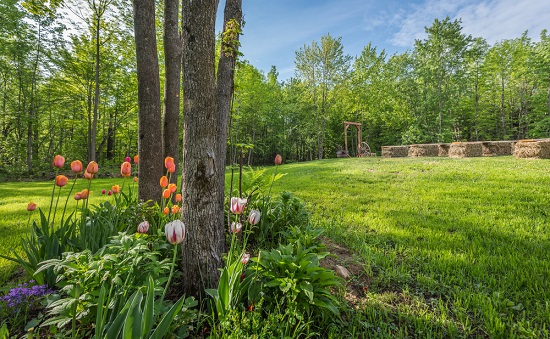
A beautiful swathe of lawn can be grown in a shaded area if you choose the right grass and care for it well. Here are some lawn care tips you need to know if you want to learn how to grow grass in the shade.
Turf grasses require at least four hours of direct sunlight to thrive, but some shade-tolerant grass mixes can survive in four hours of partial or dappled shade. The cool-season grasses that are shade-tolerant include rye and fine, tall fescues. St. Augustine and zoysia are two examples of warm-season grasses that can grow in shade. Here are a few tips about lawn care in Conway SC you need to know.
Lawn Care Tips
Pruning Trees
Pruning limbs can often lighten shaded areas under trees or tall shrubs. When pruning, make sure to reduce the canopy so sunlight can reach the grass below. It’s a good idea for trees to also remove lower branches, a process known as “limbing up”. You can raise the canopy of the tree and allow sunlight to reach the turf. You can do the pruning with just two feet. Talk to a certified arborist if you have mature trees.
Aerate
Soil aeration is a great option for shady lawns. It creates holes in soil and exposes the roots zone of the grass. These holes enable water, fertilizer, and air to reach the roots of the grass. The type of grass you have will determine when to aerate. Aeration should be done before the grass enters its peak growth phase.
Warm-season turf should be aerated in the late spring or early Summer, and cool-season grasses in the early Fall. Fall aeration should be done so that grass has four weeks of active growth before the average first frost in your area. A core aerator pulls soil plugs from the lawn for the best aeration. A digging fork can be used quickly and cheaply to aerate small areas. If the layer of thatch is thicker than 1 1/2 inches, it’s time to aerate.
Add organic matter
Shaded grass needs less fertilizer than grass in full sunlight. A thin layer of compost can be applied to shady lawns in the spring. Spread compost after you have aerated. Apply compost before overseeding thin, shaded turf. After it has been applied, the compost layer should be thin enough to still see the grass blades. Spread it using a push-broom and between grass plants.
Select the right Grass Seed
Quality grass seed is worth the investment, no matter if you are sowing your first lawn or maintaining an existing thin one. Shade-tolerant grasses should be included in a quality seed mix. This way, if one type of grass fails, another can take its place. Quality grass seed labels should contain a minimum of one percent weed seed and a minimum of four percent inert matter. A germination rate of less than 70% is unacceptable for grass seed.
Use Drop Spreader to Overseed
Drop spreaders are great for controlling seed distribution if you are starting a shady yard from scratch. To ensure adequate seed coverage, overlap each pass. Broadcast or rotary spreaders are ideal for seeding in shady areas. A drop spreader will cost you more, but it is worth the money if your lawn is typical suburban-sized.
Know When to Drink Water
Shaded lawns don’t require as much water as sun-drenched turf. Shaded lawns are less likely to need watering than those that have overhead trees. You can’t always rely on rain making it through the tree canopy to soak your soil. Tree roots are also competing for water. You can encourage the formation of deeper roots by watering your grass regularly but not too often. This is crucial for shady grass to thrive.
Do not overcut
Shaded areas should be kept 1/2 inch higher than the sunniest parts of your yard. This allows each grass blade to have more space for photosynthesis, which is what fuels grass growth. Avoid mowing shady areas of lawn as they can often not recover. This happens most often during the first spring mower mowing. You should make a habit of changing the height of your mower every time you reach your shady section.
Fertilizing
Shaded lawns should receive approximately one-half to two-thirds less nitrogen each year than sunny lawns. Apply winterizer fertilizer in autumn at half the rate recommended for cold areas.
Spot-Spray Weeds
If you do have a problem with weeds, limit herbicide use to shady areas. Spot spray weeds when necessary. You want to minimize stress on the grass by avoiding herbicides.
Take a look at a Pathway
Reduce stress on the grass in shaded areas. Reduce foot traffic. To protect the grass and additional lawn maintenance, you might consider installing stepping stones and a simple mulch path. Avoid using the shady area as a playground for children. You should not allow your pets to use the area for toilet breaks. You can also vary the mowing patterns in shaded areas. They are more susceptible to ruts and compacted soil.
Call Conway Lawn Care Service now if you need help in taking care of your lawn.
Conway Lawn Care Service
Conway, SC 29526
843-353-2259
http://conwaylawncareservices.com/
No comments:
Post a Comment